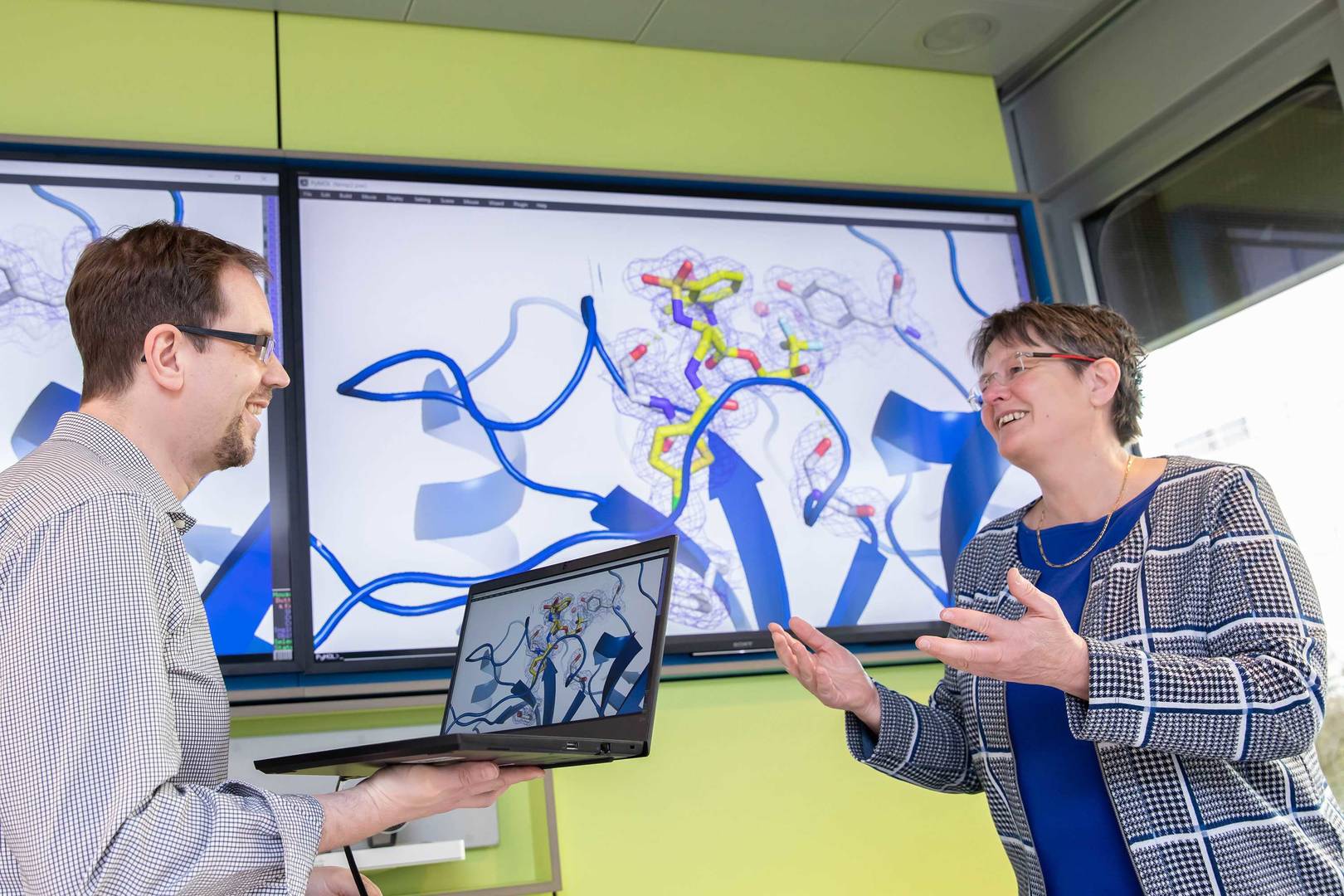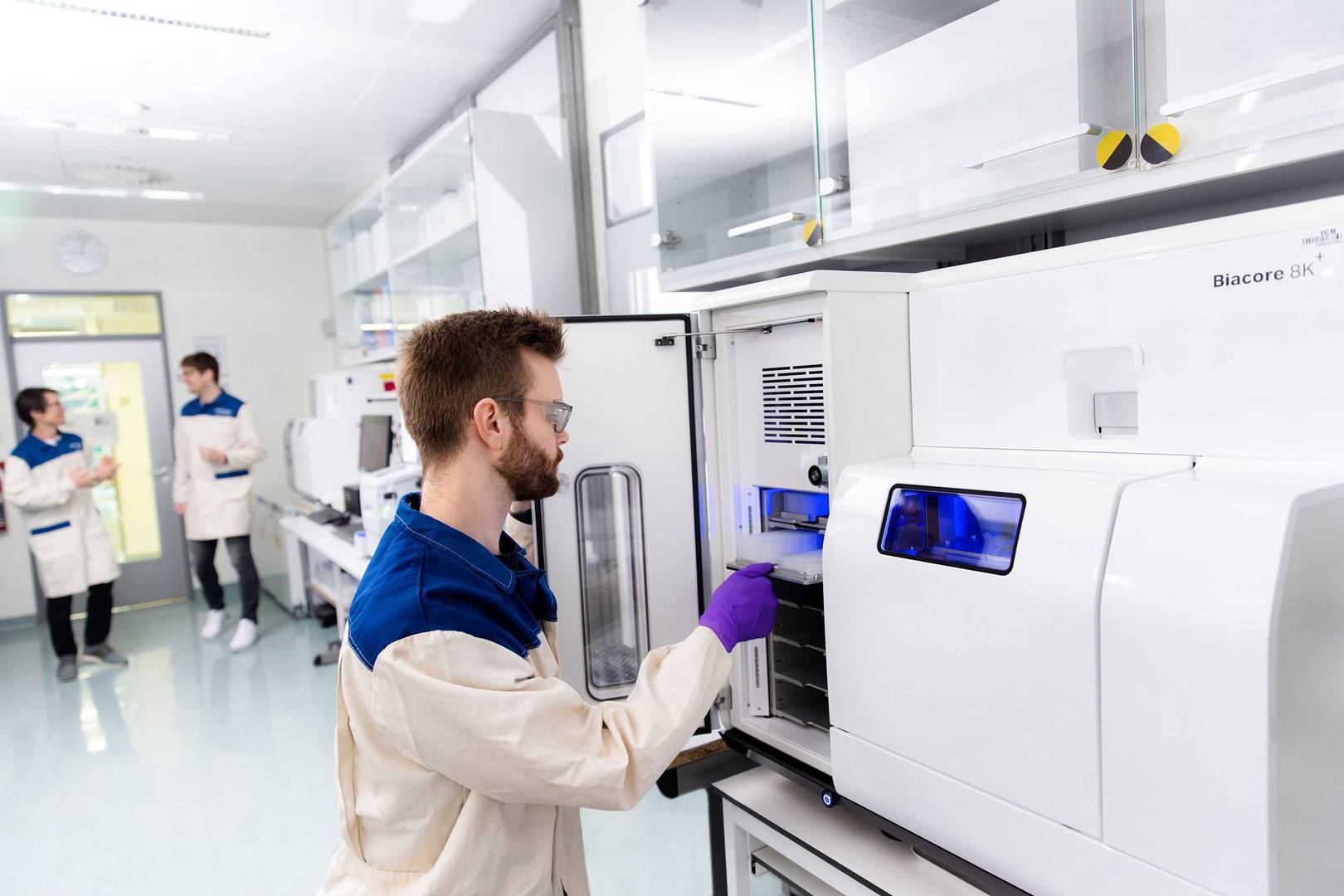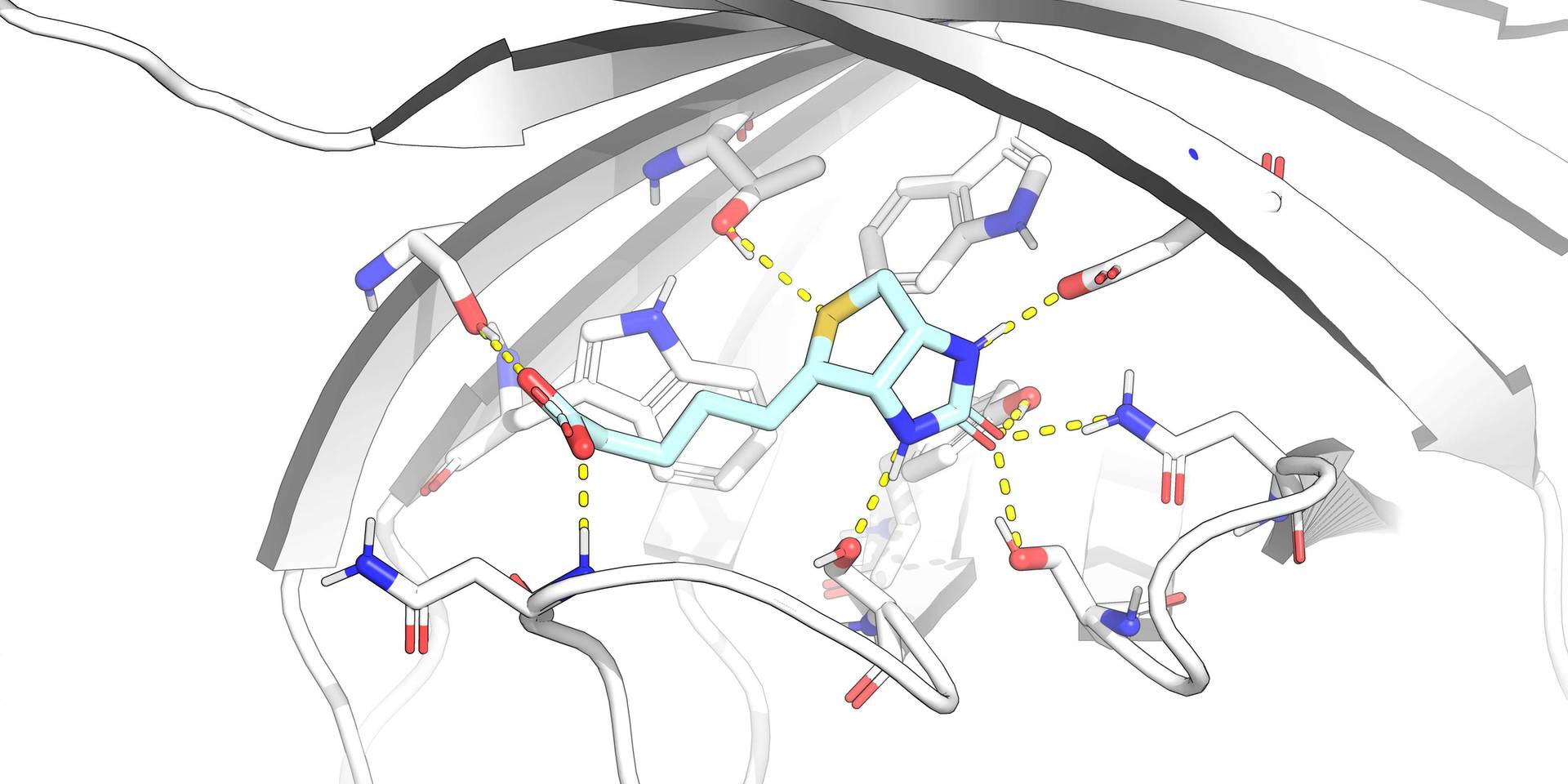Fragment screening (FS) is a proven method for identifying new chemical matter. We utilise biophysical and crystallographic methods to screen our proprietary library of ~2,000 fragments. Our tailored FS solutions are designed to fit your program's needs, guiding fragment growing or linking to optimise potency and selectivity. FS can also be combined with high-throughput screening (HTS) for comprehensive lead-finding programs.

Our fragment libraries include two Ro3-compliant options: 2,000 fragments in 50 mM D6-DMSO for biophysical screening and 900 fragments in 500 mM DMSO for high-throughput X-ray (HTX) screening. Fast structure–activity relationships (SAR) of fragment hits can be obtained via SAR-by-catalogue at external vendors or by mining our internal life science database of over 3 million compounds. Additionally, we can screen your fragment library alongside our in-house options.


We use 3D structural information from X-ray crystallography or cryo-EM to accelerate your drug discovery process.
Learn more
We support you with in-depth analysis of compound-target interactions with our biophysics toolbox.
Learn more
Leverage structural biology data though molecular modelling to accelerate access to improved chemical matter.
Learn more